Recent Articles
Popular Makes
Body Types
10 Things You Need to Know About the 2018 Honda Accord
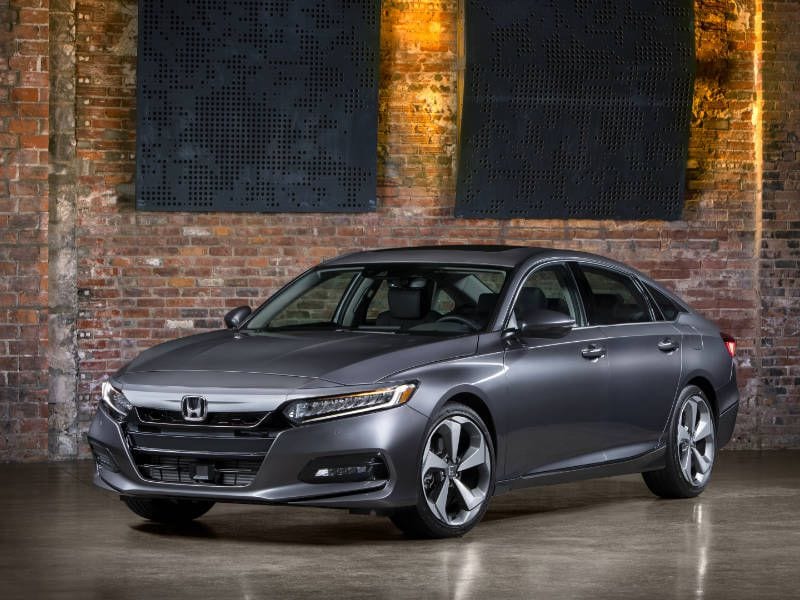
2017 Honda Accord front quarter ・ Photo by Honda
Predictably, Honda calls the 2018 Accord, the 10th generation of an evolution dating to 1976, the “best ever.” This isn’t surprising. But invariably, there are degrees of “best ever,” ranging from incrementally best ever to best ever by a lot.
Judging by the car revealed in Detroit July 14, Honda’s claim seems to be near or at the top of the best-ever charts. Due in showrooms this fall, the new Accord will be truly new, end to end, top to bottom—new skin, new chassis, new powertrains, new everything.
Slick New Styling
The most visible indication of new is the Accord’s exterior, a dramatic departure from the previous generation. Honda has never been known for daring design, particularly with this bread-and-butter sedan series, but the teardrop shape, laid back windshield, flowing lines, and wide stance suggest sporty underpinnings and an athletic soul.
This is an expectation with plenty of precedents. Accords have always earned high marks on the dynamic scale, and it’s reasonable to anticipate that the latest generation, with its stiffened unibody, revised suspension (available active damping,) and reduced mass, will improve on the agility index of its predecessor.
The Accord’s slick new shape, reminiscent of the look established 12 years ago by the Mercedes CLS, is distinctly coupe-like, and Honda has the good grace to refrain from calling it a “four-door coupe,” an oxymoron visited on automotive styling by other carmakers.
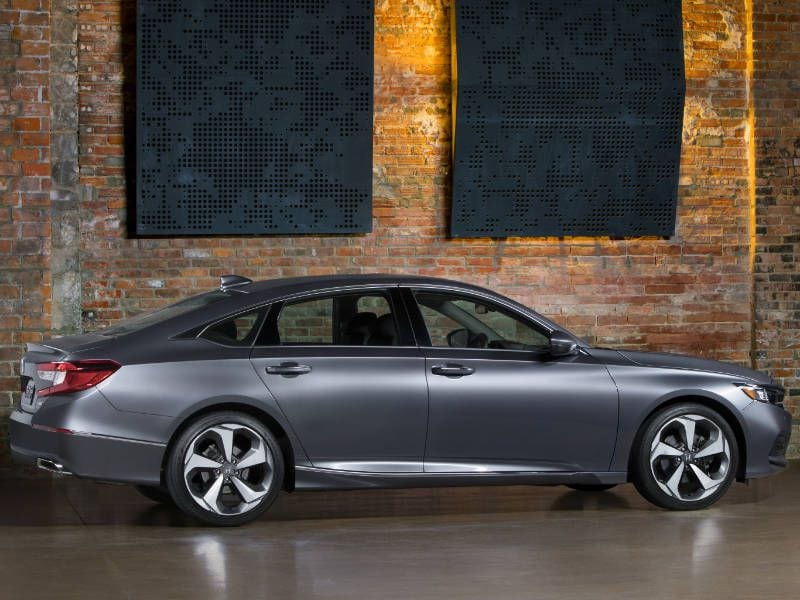
Photo by Honda
Adieu to the Coupe
One of the reasons for the new Accord’s swoopier coupe-like styling is that it’s the only body style for the new generation. Previously, the coupe was the model that got the sexier sheet metal, while the sedan was given more conservative styling. And although the Accord coupe sales were robust in previous generations, they’ve dwindled over the last decade or so. Because the current coupe accounts for only about five percent of total Accord transactions, the 2018 model will be sedan only.
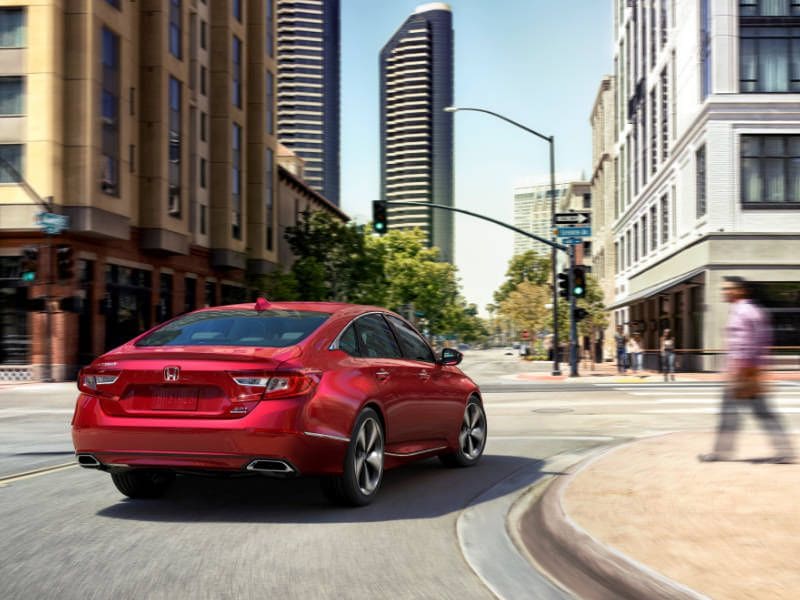
Photo by Honda
Same Size, Different Dimensions
The new Accord is similar in size to its predecessor, but only in the sense of total dimensions. This 10th generation is a smidge shorter than the 2017 Accord sedan—not quite a half-inch—and also loses just over a half-inch of height. But the body is almost a half-inch wider, the track has expanded front and rear, and the wheelbase has been stretched 2.16 inches, to 111.4.
All of this contributes to a more fluid profile—longer hood, raked windshield, lower roofline falling away to a very short deck, shorter overhangs and proportions reminiscent of a rear-drive sedan.
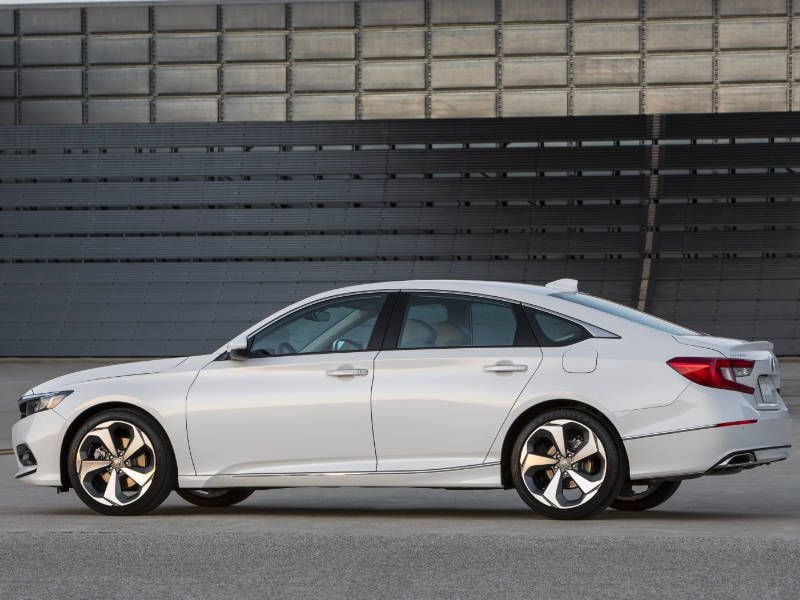
Photo by Honda
Three Power Choices
As with the previous generation, there are three propulsion options, two fed by gasoline, one a gasoline-electric hybrid. But the gasoline engines are both new to the Accord. Replacing the previous non-turbo four-cylinder, the standard engine is the 1.5-liter turbo four from the latest Civic family, rated at 192 horsepower and 192 pound-feet. For more performance, the upgrade, replacing Honda’s 278-hp V-6, is a 2.0-liter turbo four-cylinder, a milder version of the engine that made its debut in the hot rod Civic Type R.
In the Civic R, it’s rated at 306 hp and 295 lb-ft of torque. In the new Accord, it generates 252 hp and 273 lb-ft, down 26 hp from the V-6, but up 21 lb-ft in the torque department.
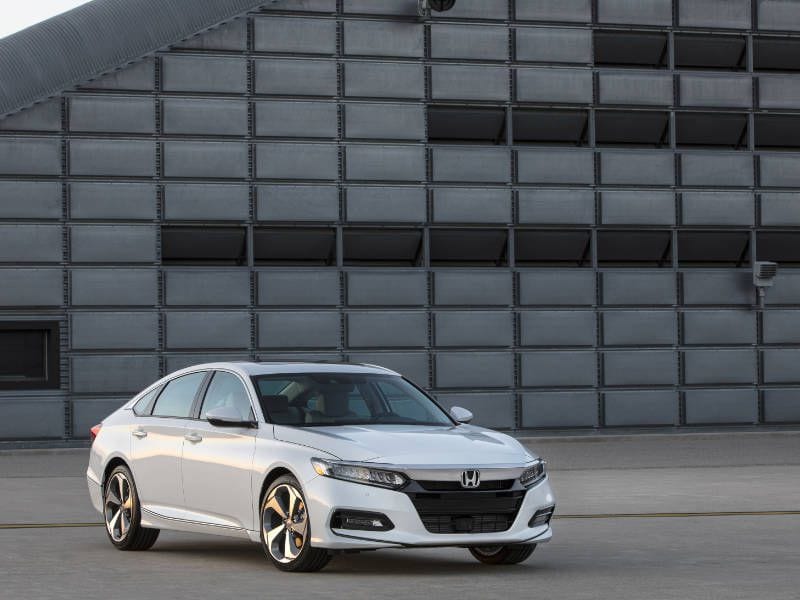
Photo by Honda
Power to the Pavement
The new Accord engines send power to the front wheels (no all-wheel drive option) through a variety of transmissions, one of them new to the car, another carrying forward from the previous generation, and the third increasingly anomalous among midsize sedans.
The 1.5-liter turbo is paired with a continuously variable transmission (CVT,) with artificial shifts programmed into its computer control. However, the upgrade engine/transmission combination is all new—the new turbo 2.0-liter and Honda’s 10-speed automatic, with paddle shifting.
Another Accord distinction: both of the gasoline turbos offer a six-speed manual transmission in Sport models, an increasingly rare choice in this class.
EPA fuel economy ratings for the new Accord lineup won’t be available until the new car is ready to roll into showrooms in late autumn.
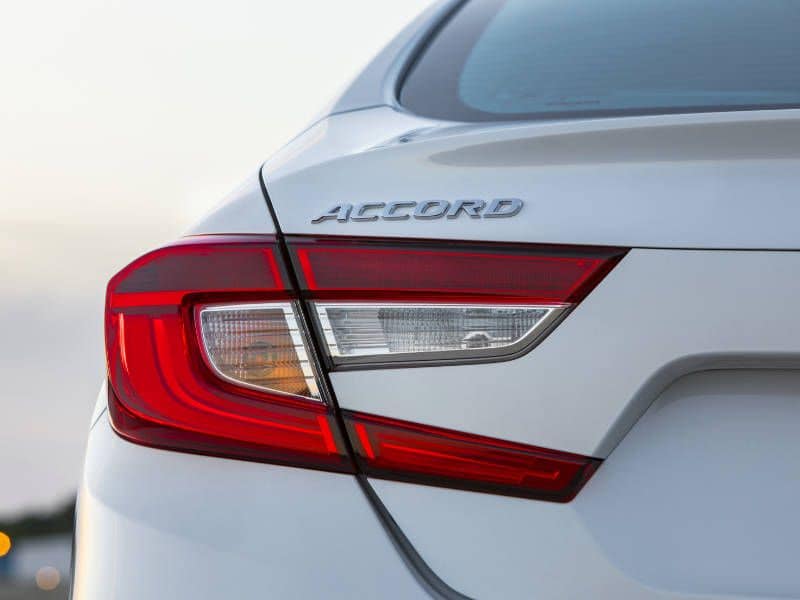
Photo by Honda
Hybrid Engine
Honda has updated the Accord’s two-motor system for the new hybrid, with a naturally aspirated 2.0-liter gasoline four-cylinder augmented by electric motors. The total power of the 2018 system is yet to be determined, as are the EPA fuel economy ratings. The combined output of the current Accord hybrid is rated at 212 hp, and the EPA projects its fuel economy as 49 mpg city, 47 highway.
As before, the new hybrid will send power to the front wheels with a direct drive system— no shifting.
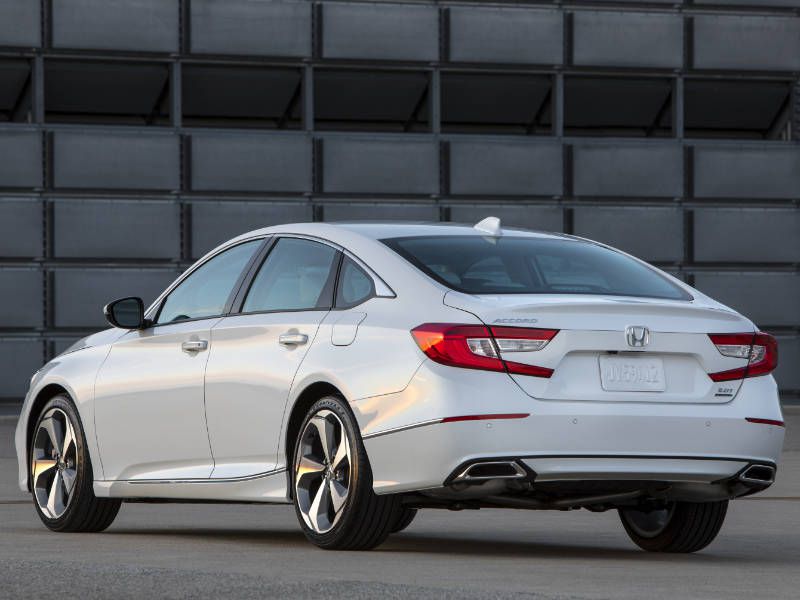
Photo by Honda
Stiffer, Stronger, and Lighter
Weight is the implacable and perennial enemy in all vehicle dynamics, as well as fuel economy, and structural rigidity is the fundamental cornerstone of responsive handling. Honda has always excelled in both areas, and the new Accord promises to continue that tradition.
The new unibody is composed of more high strength and ultra high strength steel than generation nine. According to Honda, the new structure represents a 54 percent increase in high strength steel and a 29 percent increase of ultra-high strength steel.
What this adds up to, according to Honda, is a 34 percent increase in torsional rigidity, i.e., twisting power, and a 24 percent improvement in longitudinal, i.e., bending rigidity. These are impressive upgrades on a structure that wasn’t exactly Turkish taffy.
And making the engineering achievements even more impressive, curb weights will be down by as much as 176 pounds.
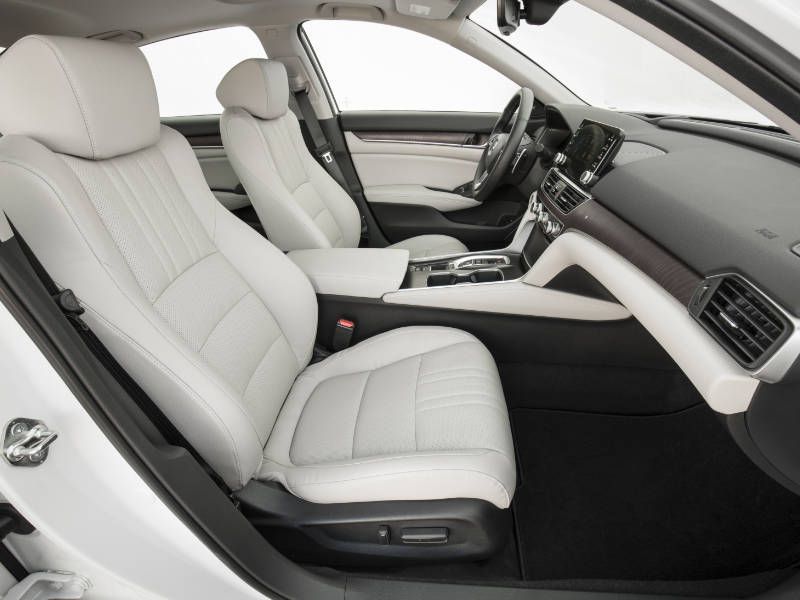
Photo by Honda
A Roomier Interior
Honda designs have long been known for interiors whose volume seems bigger than possible for a given set of exterior dimensions, and the 2018 Accord follows in those footsteps. Although the new car is a smidge shorter than the current Accord, its longer wheelbase allowed the design team to add almost two inches of legroom to the already roomy rear seat, and also expand trunk capacity to 16.7 cubic feet, a gain of nearly a cubic foot.
Like most contemporary new vehicles, the 2018 Accord ups the ante concerning interior materials—lots of soft touch surfaces, upgrades to infotainment and connectivity, redesigned seats with heating and cooling plus the option of more adjustability, and paddle shifting for the 10-speed automatic.
And a tech breakthrough: after its lengthy obsession with total touchscreen control, Honda has re-discovered tuning knobs for the radio station, and volume.
Another interior improvement is a little more subliminal. The A-pillars, flanking the windshield, are thinner, and the instrument cowl height is lower, enhancing the driver’s view of the road ahead, a key safety factor.
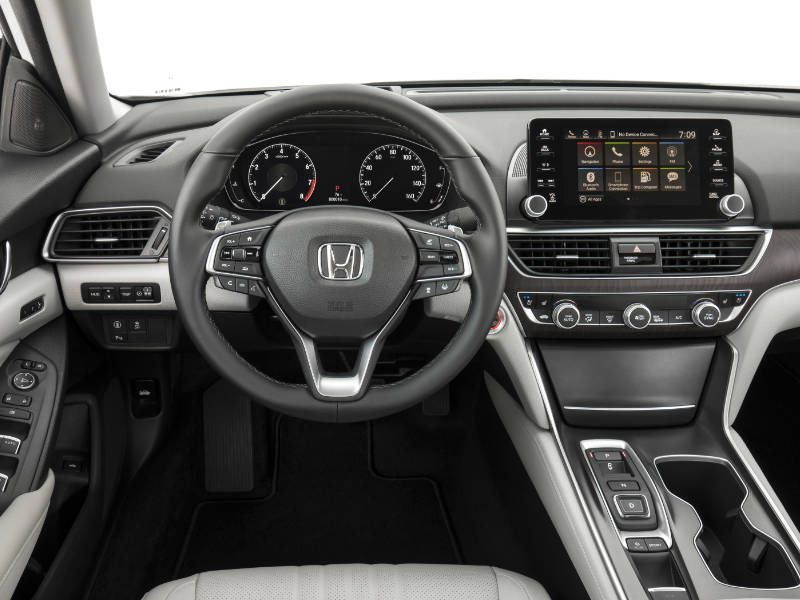
Photo by Honda
Improved Safety
Speaking of safety, the 2018 Accord ramps up its safety story. The expanded suite of Honda Sensing safety technology will be standard equipment across the board.
In addition to familiar features such as lane departure warning and assist, and adaptive cruise control with automatic emergency braking, the Accord will have road departure mitigation and traffic sign recognition. Other features that can be perceived as safety-related: stolen vehicle tracking, remote engine start, remote locking and unlocking, and remote diagnostics. All are baked into the Hondalink telematics system.
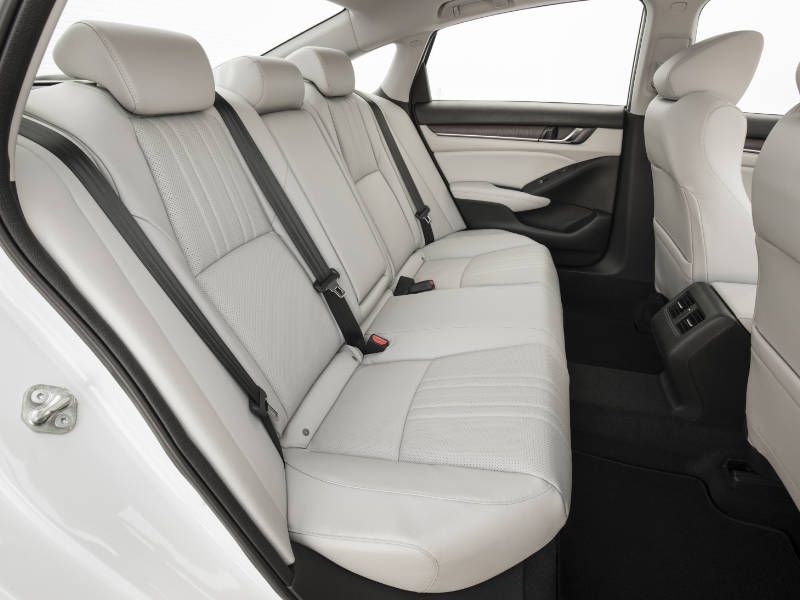
Photo by Honda
Pricing Expectations
New Accords won’t begin trickling into showrooms for several months, and predictably Honda is still months away from any discussion on 2018 pricing.
Here’s what we currently know:
Expect to see LX, Sport, EX, EX-L, EX-L Navi, and Touring trim levels available with the 1.5-liter engine. The more powerful 2.0-liter turbo will be limited to Sport, EX-L, EX-L Navi, and Touring trims, while the hybrid trim choices will include a base model plus EX, EX-L, EX-L Navi, and Touring.
Current Accord MSRPs cover a broad range, from $23,330 to $36,830. While Honda will likely try to keep base models close to their current price points, an all-new car represents a substantial investment. Consequently, expect incremental increases in higher trims.
Also, while we don’t know how the Accord pricing will play out, we expect clues can be found in the pricing ladder for the new Toyota Camry range, which has been public for several weeks. The Accord may not match the corresponding Camry price for price, trim for trim, but you can bet those prices will be close.
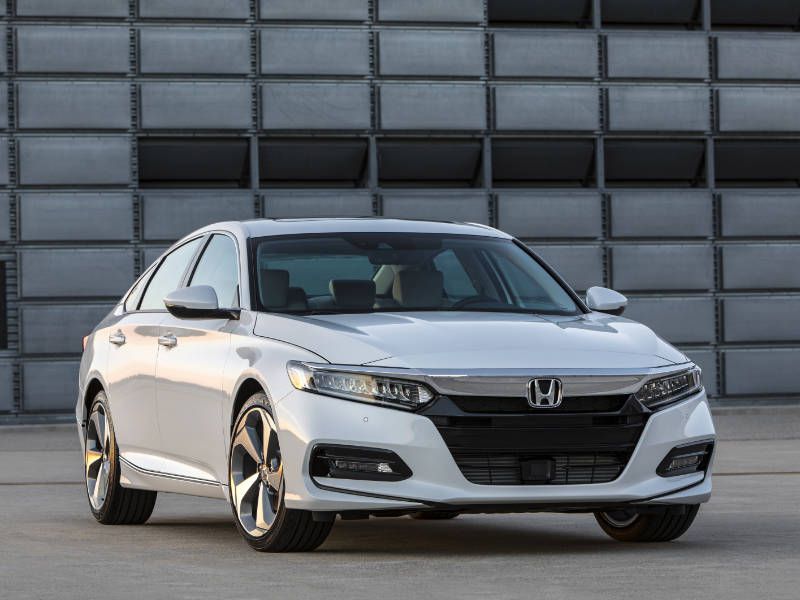
Photo by Honda